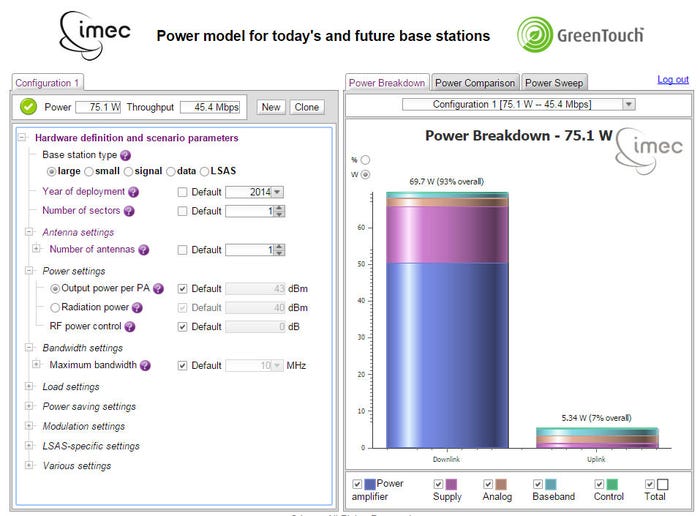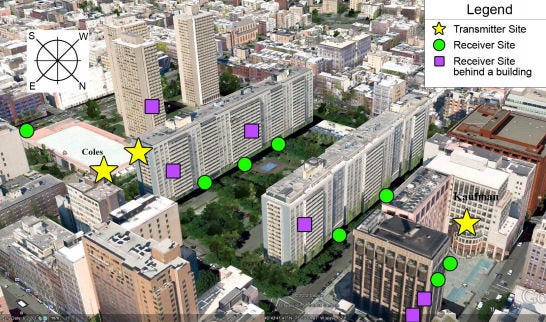Making 5G a green radio access network
The major challenge that mobile network operators are facing towards 5G is to provide the required capacity while keeping energy consumption and costs at the lowest levels.
May 27, 2016

Telecoms.com periodically invites expert third parties to share their views on the industry’s most pressing issues. In this piece Natalia Molinero Mingorance of behindthesciences.com looks at the competing priorities and varied technologies that are involved in the development of 5G.
Nowadays is difficult to imagine our lives without mobile communications. We are replacing the use of desktop computers by mobile phones and tablets to perform the main applications that we need every day. This means that the amount of data needed to support our online activity is hugely increasing. In addition, automatic data sharing and information collection from computers, sensors and meters, the so-called machine-to-machine communications, is growing significantly. The major challenge that mobile network operators are facing towards 5G is to provide the required capacity while keeping energy consumption and costs at the lowest levels.
However, there is trade-off between data capacity, energy consumption and costs. In 2012, the power consumption by ICT infrastructures was over 20 GW and the telecoms sector accounted for 25%. The largest mobile network at that time was formed by 1.1 million of base stations, consuming over 14 billion KW per hour. At present, there are several research projects targeting this issue: the EARTH project is working in antenna muting and adaptive sectorisation techniques that result in energy savings of 60-70 % with less than 5% of throughput reduction.
Among the different research outcomes, there are three main developments that the network operators are considering: heterogeneous network (so called HetNets) deployment, the mmWaves spectrum usage and the control and user plane separation.

Figure 1. Sources of data traffic
HetNets deployment
The first one is the use of heterogeneous networks which consists of both macro- cells, to cover wide areas, and short range small cells. The increase in the number of small cells will allow the coverage of areas of high traffic demand such as businesses, campuses or shopping malls and they provide a main advantage in comparison to macro-cell in terms of energy efficiency while keeping high data rates. Base stations are the network element that consume 90% of the total energy. We can estimate the energy consumed by several small cells and compare it with the energy consumed by a macro-cell using the online IMEC power model, where we can select several parameters of the base station and see the power consumption of the different components:

Figure 2. IMEC Wireless Power Model
As we can observe in the image above, the power amplifier (PA) is the element that consumes more power, so one of the main research challenges at the moment is to find the strategy to improve the PA efficiency.
Deploying new macro-sites is expensive and not energy efficient so operators’ other main interest is find an energy efficient deployment strategy. The network capacity is increased by increasing the number of sectors. However, the energy consumption and throughput trade-off has resulted in new techniques that combine the use of small cells and base station sectorisation and new strategies such as Adaptive coarse sectorisation, for example, by switching from 6 to 3 to 1 sector and adaptive progressive sectorisation, for example, by progressively switching the sectors: {6,5,4,3,2,1}. Recent studies show that combining small cells with tri-sector macro base stations without increasing the sectorisation of the macro base stations is more energy efficient than increasing the number of sectors in the macro base stations, when targeting the same area capacity density. In addition, adaptive sectorisation improves the RAN energy efficiency compared to fixed sectorisation up to a 25%.
mmWaves Spectrum
The second development is the use of more radio spectrum to boost capacity and meet the traffic demand. By using a new set of higher frequency bands, the millimetre waves, much higher data rates can be achieved. The considered bands are between the 30 and 300 GHz, where the available system bandwidths are wider than the ones in use at present. However, these radio signals do not propagate as far as for existing broadband frequencies, so they would be best suited for small cells. Studies in New York City for 28 and 73 GHz, including their corresponding channel models have shown an excellent case for a dense, urban and outdoor scenario where high user density allowed the use of small cells with a coverage of 100-200m. Furthermore, the transmitted power for each of these small cells is less than 1 W (an LTE macro-base station typically transmit 40 W). The results of these studies were an increase of the throughput of at least one order of magnitude in comparison with the current LTE deployment for the same cell density.

Figure 3. Typical measurement locations in NYC at 28 GHz (similar locations where used for 73 GHz)
Split of control and user planes
The third concept relates to efficient management of radio spectrum with a large number of small cells operating. The first challenge in this scenario is the difficult management of vast number of small cells; operators are still debating whether this management would be central or distributed. The second problem is the interference that these small cells can cause which would limit their efficiency. One solution to these problems are the “phantom cells”. The principle of these is to use a separate higher power for the data link to coordinate the mobile users; this will simplify the system by splitting the control plane and the user plane (i.e., the data link).

Figure 4. Phantom cells power off-load
The data plane will serve a dense layer of access nodes that will be activated on demand while the control plane will provide information related to access the system and in specific signalling states; this means, both planes will be use when and where needed. Therefore, as the control plane design is the only that needs to be static, this development allows the dynamic system optimization in real time.
Conclusion
Integrating these three developments will result in a green radio access network by 2020; where the energy consumption will be reduced without compromising the numerous requirements of 5G such as the high data rate demand. In addition, these steps will be crucial to reduce the operational cost, to provide coverage where current standards are still weak. Therefore, the telecom industry now needs to open the range of design principles, traditionally focused on providing high data rates and capacity, and target a flexible, scalable and energy efficient network design. More technologies that aimed this goals are the cloud-RAN and the virtualized network functionality.
 Natalia graduated in Telecommunication Engineering from Spain. She came to the UK two years ago to study an MSc in Wireless Communications System and upon completion was offered a job as a Research Associate on a 5G project. She is also currently doing a PhD on the same subject and runs the telecoms sections in behindthesciences.com blog.
Natalia graduated in Telecommunication Engineering from Spain. She came to the UK two years ago to study an MSc in Wireless Communications System and upon completion was offered a job as a Research Associate on a 5G project. She is also currently doing a PhD on the same subject and runs the telecoms sections in behindthesciences.com blog.
Read more about:
DiscussionAbout the Author
You May Also Like










.png?width=300&auto=webp&quality=80&disable=upscale)


_1.jpg?width=300&auto=webp&quality=80&disable=upscale)